The Catalyst Killing - [2]
But I did see her again – that very same evening, in the very same place. At five to eleven, to be precise, only moments after I had jumped out of a police car borrowed from Smestad police station.
In my somewhat feeble defence, I did immediately realize what had happened when I got a telephone call from Holmenkollen at a quarter to eleven to say that the train that left Smestad station at twenty-nine minutes past ten had run over a young woman on the tracks.
When I returned, the woman on the Lijord Line lay immobile and lifeless on the tracks, in sharp contrast to the energy and sheer speed she had displayed in her mad dash to catch the train when I left Smestad only an hour ago. It was without a doubt the same woman. I recognized her jeans and her fair hair.
The driver was understandably beside himself. He repeated over and over that the woman had been lying on the tracks when he ran over her, and it had been impossible to see her in the pitch black until the train was almost on top of her, and by then it was technically impossible to stop. It had all happened so fast and been so terrible that he could not say whether she had been alive or not before he hit her. Fortunately, he seemed to calm down a bit when I assured him for the fourth time that no one suspected him of negligence or any other criminal act.
According to the student ID card she had in her purse along with three ten-kroner notes, a fifty-kroner note, a monthly travel pass and two keys, the woman on the Lijord Line was called Marie Morgenstierne. She studied politics at the University of Oslo and had apparently celebrated her twenty-fifth birthday four weeks earlier. That was all we found that might be of any interest. If she had had a bag with her that evening, it had been lost before her dramatic flight ended on the tracks.
It struck me immediately that I had heard the name Marie Morgenstierne before. But there and then, I could not recall where or under what circumstances.
The train had been coming to a halt when it hit her, but her upper body was so badly injured on impact that it was impossible to establish the cause of death at the scene. Her face, however, was intact. She stared up at me with the same frozen expression of fear that I had seen through the train window scarcely an hour earlier.
Again I wondered whether she might simply be a disturbed woman who had thrown herself in front of the train, or whether there was something else behind this. And then I promised myself that I would not let this case go until I found out. Fortunately I had no idea how many days this would take, or how complex the search for the truth about the death of the woman on the Lijord Line would prove to be.
II
It was with some trepidation that I dialled the home number of my boss at ten minutes past midnight. I knew that he was a night owl who lived on his own, and he had granted me permission to take advantage of this in the event of ‘murder or suspicious circumstances until just after midnight’.
My boss listened carefully to my brief account. Then, to my relief, he immediately said that given my first-hand impressions of both the victim and the scene of the crime, I was obviously best qualified to head the murder investigation.
‘Do you know who Marie Morgenstierne was, by the way?’ he then asked, with great seriousness.
I had to say no. I still had the uncomfortable feeling that I had heard the name somewhere, but could not remember in what connection.
‘Marie Morgenstierne was Falko Reinhardt’s fiancée,’ my boss said, pensively.
There was silence on the line for a few seconds, before he swiftly added: ‘She was one of the small circle around him, one of the anti-Vietnam activists in the revolutionary youth movement. And she was sleeping in the same bed as Falko Reinhardt on the night that he went missing. She was the first to discover that he had disappeared. A good many people in the police and the public in general, I am sure, would be extremely grateful and impressed if you managed to learn what happened to Falko Reinhardt on that stormy night in Valdres, at the same time as solving the new case. I will have all the papers from summer 1968 sent to your office first thing tomorrow morning.’
I thanked him and put down the receiver.
Then I went to bed, but was unable to sleep. In the course of one and a half hours on what I had assumed would be a quiet Wednesday evening, I had been given responsibility not only for a new murder case, but also the division’s strangest and most talked-about missing person case of the past decade.
Only one thing was clear to me when I finally fell asleep on 5 August 1970 after an unexpectedly dramatic day, and that was who I needed to call before doing anything else when I reached the office the next morning. The telephone number for the disabled professor’s daughter, Patricia Louise I. E. Borchmann, was still written between the emergency numbers for the fire brigade and Accident and Emergency department on my telephone lists, at home and in the office.
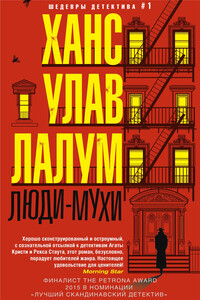
Убит бывший лидер норвежского Сопротивления и бывший член кабинета министров Харальд Олесен. Его тело обнаружено в запертой квартире, следов взлома нет, орудие убийства отсутствует. На звук выстрела к двери Олесена сбежались все соседи, но никого не увидели. Инспектор уголовного розыска Колбьёрн Кристиансен считает, что убийство, скорее всего, совершил кто-то из них. Более того, он полагает, что их показания лживы.
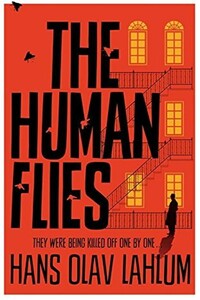
Oslo, 1968: ambitious young detective Inspector Kolbjorn Kristiansen is called to an apartment block, where a man has been found murdered. The victim, Harald Olesen, was a legendary hero of the Resistance during the Nazi occupation, and at first it is difficult to imagine who could have wanted him dead. But as Detective Inspector Kolbjorn Kristiansen (known as K2) begins to investigate, it seems clear that the murderer could only be one of Olesen's fellow tenants in the building. Soon, with the help of Patricia – a brilliant young woman confined to a wheelchair following a terrible accident – K2 will begin to untangle the web of lies surrounding Olesen's neighbors; each of whom, it seems, had their own reasons for wanting Olesen dead.
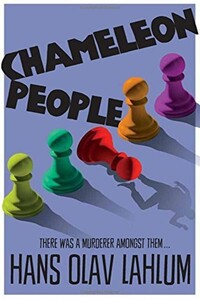
From the international bestselling author, Hans Olav Lahlum, comes Chameleon People, the fourth murder mystery in the K2 and Patricia series.1972. On a cold March morning the weekend peace is broken when a frantic young cyclist rings on Inspector Kolbjorn 'K2' Kristiansen's doorbell, desperate to speak to the detective.Compelled to help, K2 lets the boy inside, only to discover that he is being pursued by K2's colleagues in the Oslo police. A bloody knife is quickly found in the young man's pocket: a knife that matches the stab wounds of a politician murdered just a few streets away.The evidence seems clear-cut, and the arrest couldn't be easier.
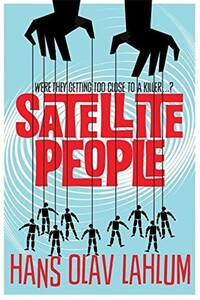
A gripping, evocative, and ingenious mystery which pays homage to Agatha Christie, Satellite People is the second Norwegian mystery in Hans Olav Lahlum's series. Oslo, 1969: When a wealthy man collapses and dies during a dinner party, Norwegian Police Inspector Kolbjorn Kristiansen, known as K2, is left shaken. For the victim, Magdalon Schelderup, a multimillionaire businessman and former resistance fighter, had contacted him only the day before, fearing for his life. It soon becomes clear that every one of Schelderup's 10 dinner guests is a suspect in the case.

В книге рассказывается история главного героя, который сталкивается с различными проблемами и препятствиями на протяжении всего своего путешествия. По пути он встречает множество второстепенных персонажей, которые играют важные роли в истории. Благодаря опыту главного героя книга исследует такие темы, как любовь, потеря, надежда и стойкость. По мере того, как главный герой преодолевает свои трудности, он усваивает ценные уроки жизни и растет как личность.

В книге рассказывается история главного героя, который сталкивается с различными проблемами и препятствиями на протяжении всего своего путешествия. По пути он встречает множество второстепенных персонажей, которые играют важные роли в истории. Благодаря опыту главного героя книга исследует такие темы, как любовь, потеря, надежда и стойкость. По мере того, как главный герой преодолевает свои трудности, он усваивает ценные уроки жизни и растет как личность.

В книге рассказывается история главного героя, который сталкивается с различными проблемами и препятствиями на протяжении всего своего путешествия. По пути он встречает множество второстепенных персонажей, которые играют важные роли в истории. Благодаря опыту главного героя книга исследует такие темы, как любовь, потеря, надежда и стойкость. По мере того, как главный герой преодолевает свои трудности, он усваивает ценные уроки жизни и растет как личность.
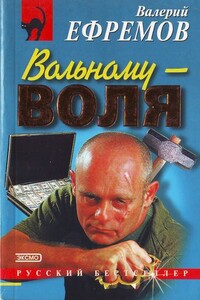
Антон Кашин всего лишь свел счеты со своим врагом — ответил кровью за кровь. Он и не подозревал, что, нажимая на спусковой крючок, приводит в действие мощные пружины неведомого механизма, способного стереть с лица земли не только его самого, но и десятки ни в чем не повинных людей… Все ополчились против него: питерская братва, лишившаяся двух миллионов долларов, заказчики, не желающие платить, милиция, которой не нужен еще один «висяк». Но отваги ему не занимать — не зря же он воевал на Балканах. Боевой опыт пригодится и в родной стране…
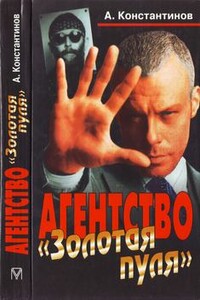
«Золотая пуля» — так коллеги-журналисты называют Агентство журналистских расследований, работающее в Петербурге. Выполняя задания Агентства, его сотрудники встречаются с политиками и бизнесменами, милиционерами и представителями криминального мира. То и дело они попадают в опасные и комичные ситуации.Первая книга цикла состоит из тринадцати новелл, рассказываемых от лица журналистов, работающих в Агентстве. У каждого из них свой взгляд на мир, и они по-разному оценивают происходящие как внутри, так и вне Агентства события.Все совпадения героев книги с реальными лицами лежат на совести авторов.

В книге рассказывается история главного героя, который сталкивается с различными проблемами и препятствиями на протяжении всего своего путешествия. По пути он встречает множество второстепенных персонажей, которые играют важные роли в истории. Благодаря опыту главного героя книга исследует такие темы, как любовь, потеря, надежда и стойкость. По мере того, как главный герой преодолевает свои трудности, он усваивает ценные уроки жизни и растет как личность.